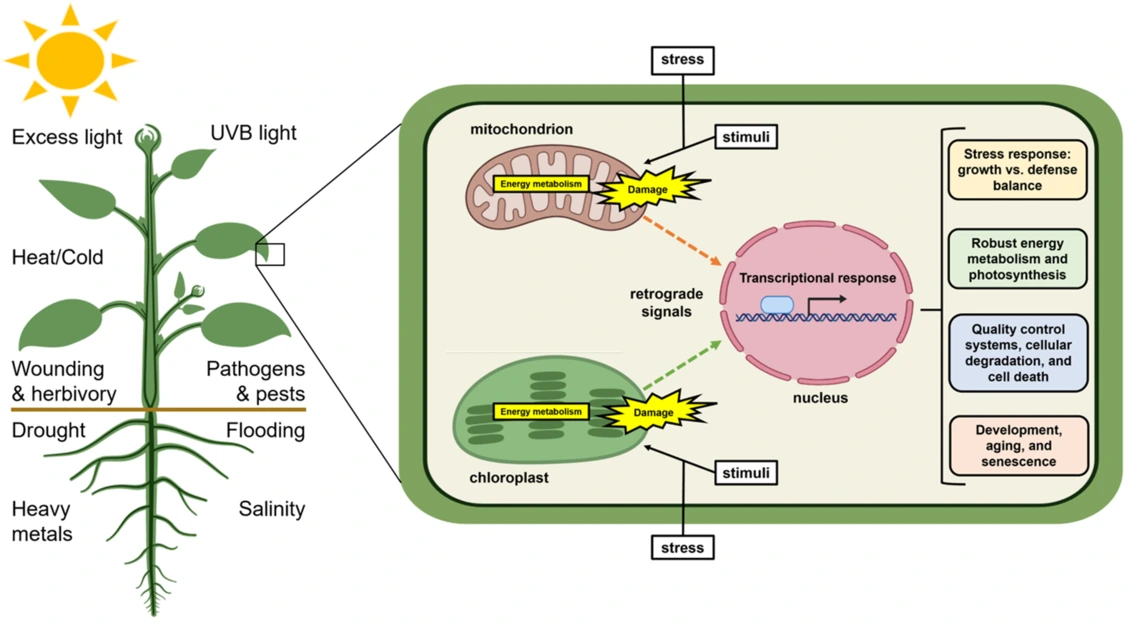School of Plant Sciences Seminar Series

Environmental stresses disrupt organelle function in plants, trigger retrograde signaling, and activate nuclear transcriptional responses to regulate growth, defense, energy metabolism, and survival
Cristian Salazar De Leon
Speaker
When
Where
Abstract: Plants are sessile organisms and have evolved cellular mechanisms to sense and respond to their environment. One way they can do this is through their energy producing organelles, which produce steady-state levels of reactive oxygen species (ROS). Increased levels of ROS can indicate changes or stressors in their environment and act as signals that trigger a cellular response. Specifically, the chloroplast produces a type of ROS called singlet oxygen (1O2), which acts as a retrograde signal from the chloroplast to the nucleus to initiate a transcriptional response to stress. Chloroplast 1O2 retrograde signaling can be monitored in the Arabidopsis thaliana plastid ferrochelatasetwo (fc2) mutant, which produces a burst of 1O2 in the chloroplast under cycling light conditions causing rapid chloroplast degradation and cell death. A genetic suppressor screen for mutants that rescued the fc2 phenotype which identified 24 ferrochelatase two suppressor (fts) candidates. Two of these fts mutants (fts2 & fts13) affect a nucleotide metabolism gene, inosine 5’-monophosphate dehydrogenase 1 (impdh1), which encodes one of two cytoplasmic enzymes necessary for de novo guanosine monophosphate (GMP) synthesis. My research project aims to understand the role of impdh1 in 1O2 signaling in Arabidopsis thaliana.

